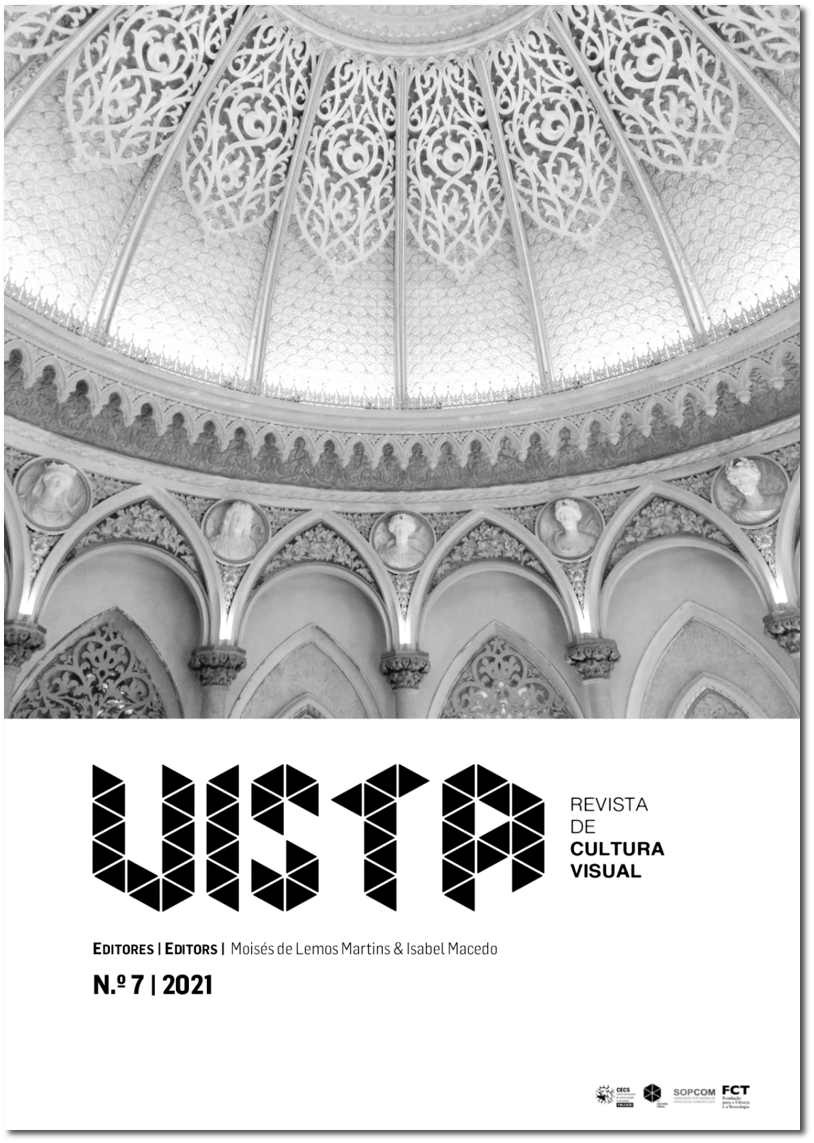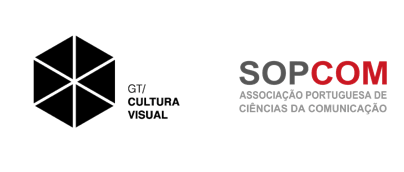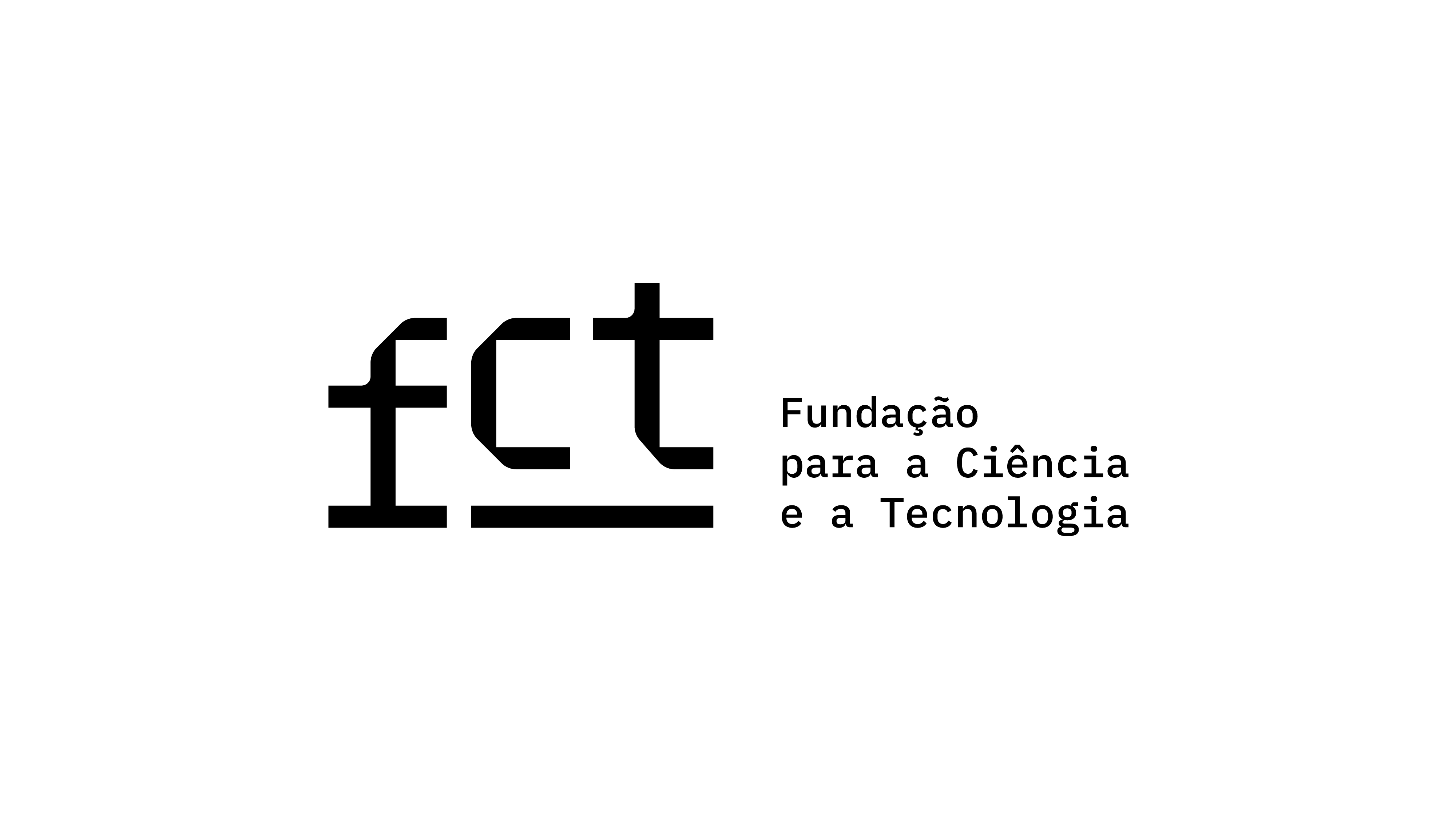Mirror games: the double in trick photography from the early 20th century
DOI:
https://doi.org/10.21814/vista.3131Keywords:
photography, mirror, media, heterotopy, formlessAbstract
This article, which is dedicated to portraits produced in the early 20th century using trick photography and to the historical and ontological relationship between photography and mirrors, is based on the assumption that it is necessary to think about the history of photography in an integrated manner, framing it in the broader context of media history and of more general theoretical questions such as the relationship between human beings and technology, the mediation between reality and imagination, and the interactions between the so-called “new” and “old” media. Mirrors and photography are means related, on the one hand, to pre-cinematographic shows and to the cinema itself, and on the other hand, to scientific devices, such as the telescope and microscope, which deserve to be rethought in terms of their mutual ambivalence. Configuring an “absolutely unreal” and “absolutely real” space, as suggested by the French philosopher Michel Foucault (1984/2005, p. 246), mirrors, like photography, became a paradigmatic example of a heterotopic space. In the history of photography and, in particular, of portraits using trick photography produced in the early decades of the 20th century, there was a marked use of mirrors and doubles, as devices able to present the disruption of human figure. We are referring to double portraits, photo-multigraphs and photography using distorting mirrors (Bergeret & Drouin, 1893; Chaplot, 1904; Hopkins, 1897; Schnauss, 1890/1891; Woodbury, 1896/1905). Starting from a predisposition to rethink about the tradition of fantasy and trick photography in the general context of media history, we propose to retrace affinities between two “heterotopic” spaces – photography and mirrors.
Downloads
References
Babo, M. A. (2016). Do espelho à fotografia. A permanência da imagem. In M. Medeiros (Ed.), Fotogramas, ensaios sobre fotografia (pp. 53-62). Sistema Solar, Documenta.
Barthes, R. (1980). La chambre claire. Note sur la photographie. Éditions de l’Étoile Gallimard Le Seuil.
Bazin, A. (1985/1991). O cinema. Ensaios. Editora Brasiliense.
Benjamin, W. (2012). Sobre arte, técnica, linguagem e política. Relógio D’Água.
Benjamin, W. (2019). As passagens de Paris. Assírio & Alvim.
Bergeret, A., & Drouin, F. (1893). Les recréations photographiques. Charles Mendel.
Borges, J. L. (2015). O livro dos seres imaginários. Quetzal Editores.
Chaplot, C. (1904). La photographie récréative et fantaisiste. Charles Mendel.
Chéroux, C. (2013). Vernaculaires. Essais d’histoire de la photographie. Le Point du Jour.
Chéroux, C., & Eskildsen, U. (Eds.). (2007). La photographie timbrée, L’inventivité de la carte postale photographique. Jeu de Paume.
Correia, M. da L. (2017). Contra-retratos: A subversão do grão fotográfico. Revista de Comunicação e Linguagens, (47), 137-156. https://www.fcsh.unl.pt/rcl/index.php/rcl/article/view/83
Didi-Huberman, G. (1998). La photographie scientifique et pseudo-scientifique. In J-C. Lemagny & A. Rouillé (Eds.), Histoire de la photographie (pp. 71-75). Larousse Bordas.
Doy, G. (2007). Claude Cahun: A sensual politics of photography. I.B. Tauris & Co.
Dubois, P. (1983/1999). O ato fotográfico e outros ensaios. Papirus.
Eco, U. (2016). Sobre os espelhos e outros ensaios. Relógio d’Água.
Fabris, A. (2020). A fotomontagem no Brasil: Uma trajetória possível. ArtCultura, 22(40), 6-27.
Flusser, V. (1989). Für Eine Philosophie Der Fotografie. Verlag European Photography.
Flusser, V. (1998). Ficções filosóficas. Edusp.
Foucault, M. (1984/2005). Espaços outros. Revista de Comunicação e Linguagens, 34, 243-252.
Freud, S. (2010). Obras completas, v. 14, história de uma neurose infantil (‘o homem dos lobos’), além do princípio de prazer e outros textos (1917-1920). Companhia da Letras.
Freund, G. (1974). Photographie et société. Éditions du Seuil.
Gaillard, A. (1980). André Kertesz. Éditions Pierre Belfond.
Hassner, R. (1998). La photographie d’amateur. In J-C. Lemagny & A. Rouillé (Eds.), Histoire de la photographie (pp. 80-82). Larousse Bordas.
Henisch, H. K., & Henisch, B. A. (1994). The photographic experience 1839-1914. Images and attitudes. The Pennsylvania State University.
Holmes, O. W. (1859, Junho). The stereoscope and the stereograph. The Atlantic. http://www.theatlantic.com/magazine/archive/1859/06/the-stereoscope-and-the-stereograph/303361/
Hopkins, A. A. (1897). Magic stage illusions and scientific diversions including trick photography. Sampson Low, Marston & Co.
Huhtamo, E., & Parikka, J. (2011). Media archæology: Approaches, applications, and implications. University of California Press.
Kracauer, S. (1964/2013). Rues de Berlin et d’ailleurs. Les belles lettres.
Krauss, R. (1981). The photographic conditions of surrealism. October, 19, 3-34.
Krauss, R. (1982/1986). The originality of the avant-garde and other modernist myths. The MIT Press.
Krauss, R. (1985a). Photography in the service of surrealism. In R. Krauss & J. Livingston (Eds.), L’amour fou, photography and surrealism (pp. 15-56). Abbeville Press.
Krauss, R. (1985b). Corpus delicti. In R. Krauss & J. Livingston (Eds.), L’amour fou, photography and surrealism (pp. 57-114). Abbeville Press.
Lacan, J. (1966). Écrits. Éditions du Seuil.
Leonardi, N., & Natale, S. (2018). Introduction. In N. Leonardi & S. Natale (Eds.), Photography and other media in the nineteenth century. Pennsylvania State University Press.
Lissovsky, M. (2012). A fotografia e seus duplos: tão breve quanto possível! Revista Ícone, 14(1), 1-16. https://doi.org/10.34176/icone.v14i1.230625
Lister, M. (1995/2013). The photographic image in digital culture. Routledge.
Manovich, L. (2001). The language of new media. MIT Press.
Martins, M. L. (2011). Crise no castelo da cultura. Das estrelas para os ecrãs. Grácio Editor.
Mavor, C. (1999). Becoming: the photographs of Clementina, Viscountess Hawarden. Duke University Press.
McLuhan, M. (1964/2008). Para compreender os meios de comunicação. Relógio d’água.
McManus, J. W. (2008). Mirrors, TRANS/formation and slippage in the five-way portrait of Marcel Duchamp. The Space Between, 4(1), 125-148.
Melchior-Bonnet, S. (1994/2016). História do espelho. Orfeu Negro.
Méliès, G. (1899). Le portrait mystérieux. Star Film.
Miranda, J. B. de (2019). Fotografia e arqueologia do materialismo. In J. B. de Miranda; J. G. Pinto & L. C. Ribeiro (Eds.), Fundamento e imersão (pp. 97-146). Orfeu Negro.
Owens, C. (1978). Photography en abyme. October, 5, 73-88.
Ponge, F. (1946/1977). L’atelier contemporain. Gallimard.
Reichstein, I. (2007). A multigraph from Montreal. Photographic Canadiana, 33(1), 12-17.
Schnauss, H. (1890/1891). Photographic Pastimes. A handbook for amateurs. Iliffe & Son.
Simmel, G. (2004). Fidelidade e gratidão e outros textos. Relógio D’Água.
Soares, S. (2004). Actor Taborda: o homem, o actor e a imagem. Sinais De Cena, (1), 121-131. https://revistas.rcaap.pt/sdc/article/view/12354
Solomon-Godeau, A. (1986). Canon fodder: Authoring Eugene Atget. The Print Collector's Newsletter, 16(6), 221-227.
Tiphaigne de la Roche, C. F. (1760). Giphantie: Volume 1. Babylone. https://play.google.com/store/books/details/Charles_Francois_Tiphaigne_de_la_Roche_Giphantie?id=0idPAAAAcAAJ
Watson, P. R. (1996). Hannah Maynard's multiple exposures. History of Photography, 20(2), 155-157.
Woodbury, W. E. (1896/1905). Photographic amusements. The Photographic Times Publishing Association.
Downloads
Published
How to Cite
Issue
Section
License
Copyright (c) 2021 Vista

This work is licensed under a Creative Commons Attribution 4.0 International License.
Authors own the copyright, providing the journal with the right of first publication. The work is licensed under a Creative Commons Attribution 4.0 International License.













